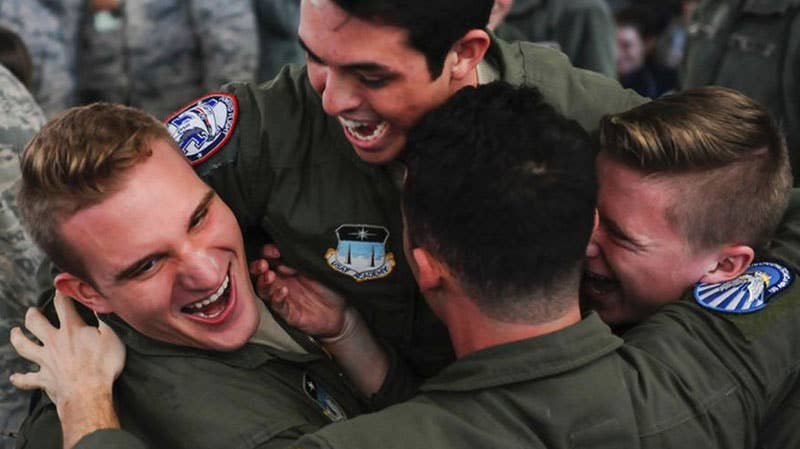
The USAF Academy has increased the number of graduates headed to pilot training this year by 26 percent. Charlie Rivezzo/U.S. Air Force
Like many other segments of the aviation industry, the U.S. Air Force is trying to wrap its arms around a pilot shortage that continues despite the significant amounts of cash the branch has been tossing into the payroll kitty for current pilots. The Air Force says the current shortage stands at 2,000 pilots, but expects the more than 530 U.S. Air Force Academy cadets from the 2019 graduating class selected to attend pilot training, pending final qualifications and commissioning, to help offset some of that deficit. The academy believed it could play a role in starting to solve the pilot shortage and indeed the 530 new selectees represent a 26 percent increase over last year’s graduating class when only 417 graduates were scheduled for pilot training.
At the end of the last fiscal year, the Air Force had about 21,000 total pilots. Even with an annual influx of newly trained aviators, the service still needs 2,000 more to replace those who leaving, some for the more lucrative commercial airlines where there is also a pilot shortage.
To help fill the gap, the Air Force has tried to entice more pilots to stay in the service by increasing retention bonuses, eliminating non-flying duties, and allowing select fighter pilots and air crew the chance to stay at some commands and bases longer to give them more stability. The service last year even expanded a voluntary recall program for retired pilots, from 25 to 1,000 slots.
In an effort to expand the current pilot training pipeline, the academy is working with Air Education and Training Command to produce more candidates capable of bypassing initial flight training, a less-specialized form of pilot training that gauges aptitude for flight and introduces the rigors of military aviation and training. Efforts are also being made to push candidates through a condensed undergraduate pilot training, or UPT, to further reduce the time needed for getting new pilots into specific airframes. The academy is planning to add flight-related courses to the sophomore and senior year to help advance pilot training candidates. Cadets already can choose a variety of aviation courses, such as piloting a sailplane and flying a propeller-driven aircraft.
The Air Force already has cut undergraduate pilot training by as much as five weeks to more quickly replace departing veteran pilots, the San Antonio Express-News reported in June. The abbreviated syllabus trims UPT from 54.7 weeks to an average of 49.2 weeks, the newspaper reported, allowing the best students to finish the course faster.
At the end of the last fiscal year, the Air Force had about 21,000 total pilots. Even with an annual influx of newly trained aviators, the service still needs 2,000 more to replace those who leaving, some for the more lucrative commercial airlines where there is also a pilot shortage.

Subscribe to Our Newsletter
Get the latest FLYING stories delivered directly to your inbox






